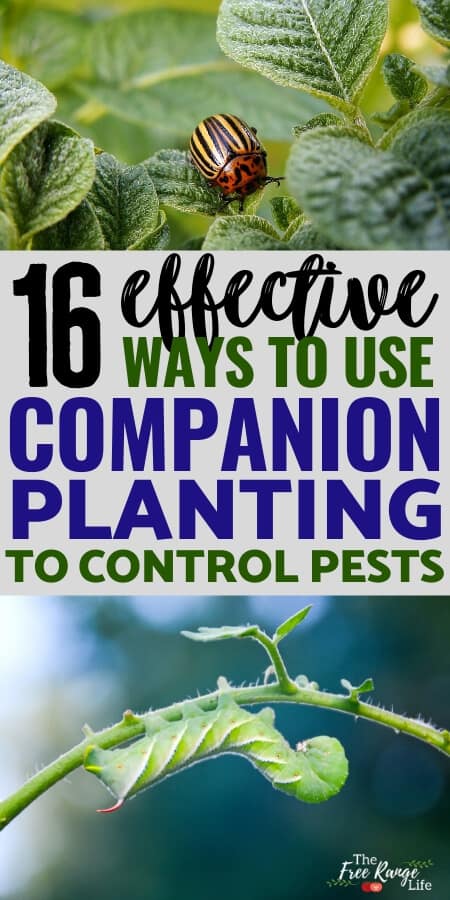Master Companion Planting for Pest Control

Master Companion Planting for Pest Control: Your Ultimate Guide
Companion Planting: The Natural Way to Control Pests
Imagine your garden as a bustling city. Now, picture some of the residents as bullies (garden pests) and others as superheroes (beneficial plants). Companion planting is like the Justice League of your garden, using the powers of different plants to keep those bullies at bay.
What is Companion Planting?
Companion planting is a clever organic gardening strategy that pairs different plants together for mutual benefit. It's like setting up a buddy system in your garden, where each plant supports and protects its neighbor.
Companion Planting Benefits: Why Should You Care?
Companion planting is a win-win situation. It helps deter garden pests, improves soil health, and even boosts the productivity of your plants. It's like having a personal trainer, a bodyguard, and a chef all rolled into one!
Understanding Garden Pests: Know Your Enemy
Before we dive into our companion planting guide for pest control, let's get to know our foes. Garden pests come in all shapes and sizes, from tiny aphids to plump caterpillars. Each has its own preferences and weaknesses.
Companion Planting for Pest Control: The Basics
Some plants have evolved their own defense mechanisms against pests. By planting these defensive heroes next to more vulnerable plants, you can create a natural barrier against invaders.
Top Companion Plants for Pest Control
Marigolds: The Garden's Bodyguard
Marigolds are like the bouncers of the garden world. They contain a substance called thiopene, which helps repel nematodes (microscopic worms), rabbits, and other pests.
Mint: The Refreshing Repellent
Mint is a multi-tasker. It smells amazing, makes a great tea, and repels ants, rodents, and some beetles. Just remember, mint can be a bit of a bully itself, so keep it in pots to control its spread.
Chives & Onions: The Pungent Protectors
These guys are like the garlic-breath kid in class – no one wants to sit next to them. Their strong scent helps keep aphids, mites, and some flies away.
Nasturtiums: The Sacrificial Lamb
Nasturtiums are like the brave soldier who takes a hit for the team. They attract aphids away from other plants, acting as a trap crop. Plus, they're edible and look gorgeous!
Herbs: The Fragrant Fighters
Herbs like rosemary, basil, and dill are packed with volatile oils that many pests dislike. They're like the perfume counter in a department store – some love it, others can't stand it.
Companion Planting Chart: A Quick Reference
Check out this handy companion planting guide for a quick reference on which plants pair well together.
Maximizing Companion Planting Benefits
To get the most out of companion planting, consider factors like plant height, shade tolerance, and root depth. It's like arranging a successful dinner party – everyone needs enough space and the right company to thrive.
Companion Planting and Crop Rotation: A Dynamic Duo
Combine companion planting with crop rotation to keep your soil healthy and pests confused. It's like changing the locks and rearranging the furniture – it makes it harder for unwanted guests to get comfortable.
Organic Pest Management: Beyond Companion Planting
Companion planting is just one tool in your organic pest management toolbox. Other natural pesticides and strategies include neem oil, diatomaceous earth, and encouraging beneficial predators.
The Role of Beneficial Insects in Companion Planting
Some plants attract beneficial insects like ladybugs, lacewings, and parasitic wasps. These guys are like the garden's cleanup crew, feasting on pests and keeping the ecosystem balanced.
Companion Planting for Pest Control: A Real-Life Example
Let's say you're growing tomatoes. You might plant basil nearby to repel flies and mosquitoes, marigolds to deter nematodes, and borage to attract bees and wasps. See? Instant Justice League!
Conclusion: Embrace the Power of Companion Planting
Companion planting is more than just a gardening technique – it's a philosophy. It's about creating a harmonious ecosystem where each plant supports and protects its neighbors. So, why not give it a try? Your garden will thank you!
FAQs
Q: Can companion planting eliminate the need for pesticides?
A: While companion planting can significantly reduce pest problems, it may not eliminate them entirely. However, it can help minimize the need for chemical pesticides.
Q: What if I don't have space for companion plants?
A: Even small gardens can benefit from companion planting. Try interplanting (mixing different plants in the same bed) or using pots for movable companions.
Q: How do I know which plants to pair together?
A: Research is key. Start with a reliable companion planting guide for pest control and experiment to see what works best in your garden.
Q: What if companion planting doesn't work for me?
A: Every garden is unique. If companion planting doesn't seem to be helping, consider other factors like soil health, watering, and weather conditions.
Q: Can companion planting help with diseases?
A: Yes! Some plants can help suppress diseases in their neighbors. For example, chives and onions can help prevent scab in potatoes.
0 Response to " Master Companion Planting for Pest Control"
Post a Comment